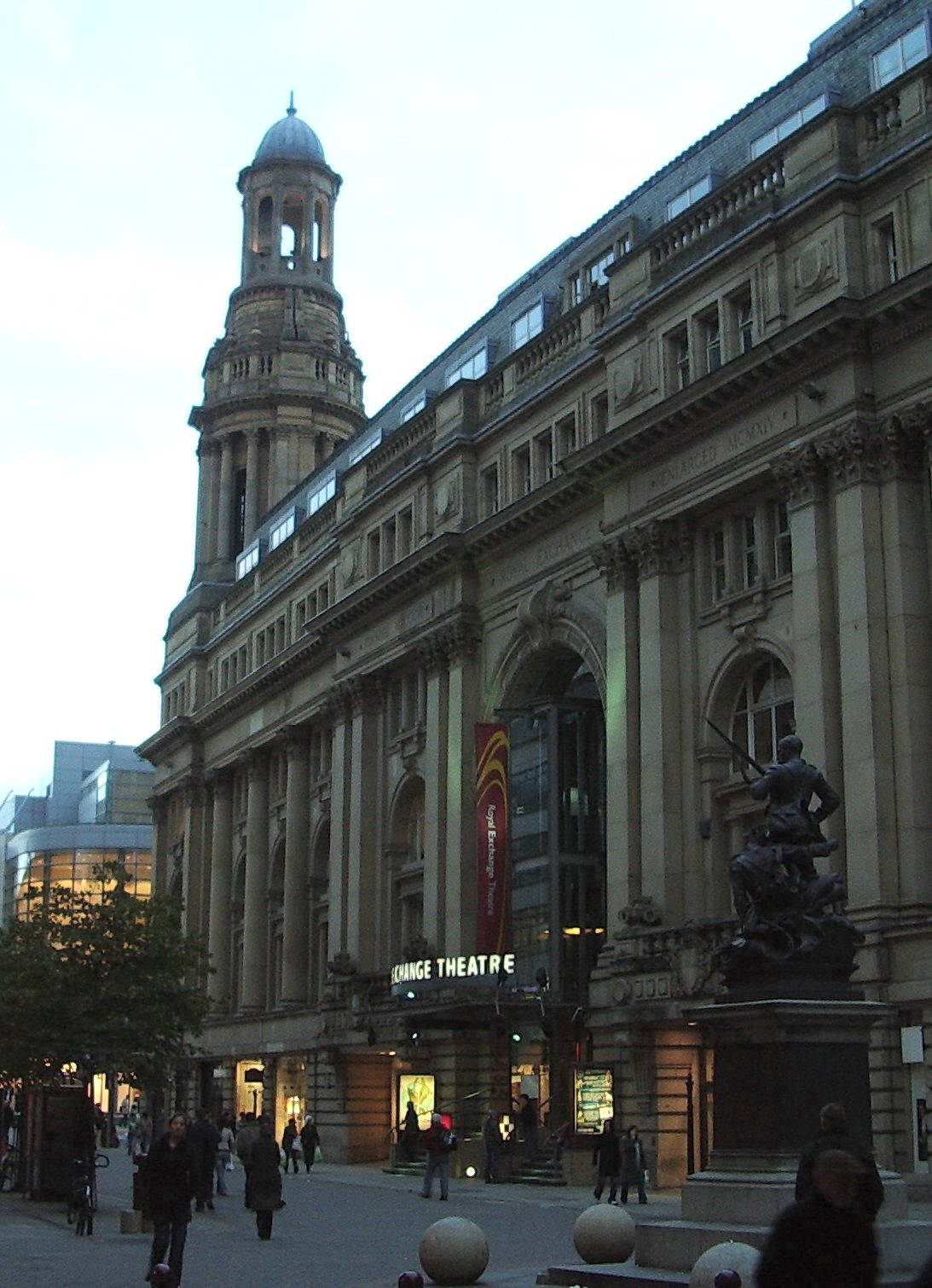- Royal Exchange, Manchester
Infobox Historic building
name = Royal Exchange, Manchester
caption = The Royal Exchange building
map_type =
latitude =
longitude =
location_town = Manchester
location_country = United Kingdom
architect = Bradshaw Gass and Hope
client =
engineer =
construction_start_date = 1914
completion_date = 1921
date_demolished =
cost =
structural_system =
style =
size = Classical style. Portland stone, slate roof with 3 glazed domes. Baroque turret at north-west corner, domes over other corners. Arcade at ground floor and enclosing central atrium at 1st floor, trading hall (now containing theatre).The Royal Exchange is a Victorian building inManchester ,England .The
grade II listed [ [http://www.manchester.gov.uk/planning/heritage/listed/streets2.htm Manchester City Council - listed buildings] ] current building is the last of several buildings on the site used forcommodities exchange , primarily but not exclusively of cotton and textiles. The first exchange was built nearby in 1729; this was replaced by a larger building in 1806-9, which was enlarged 1847-9, and replaced in 1867-74 byMills & Murgatroyd .Hartwell, p155.] Extensions and modifications were carried out in 1914-21, byBradshaw Gass & Hope , and formed the largesttrading room in England.Parkinson-Bailey p142.] The interior building was rebuilt after war damage with a much smaller trading area.Hartwell, p155.] Parkinson-Baily, p169.] The top stages of the clock tower, which had been blasted off, were replaced in a much simpler form. Trading finished in 1968, and the building was threatened with demolition.Parkinson-Bailey, p206]The building remained empty until 1973 when it was used to temporarily house a theatre company. An innovative
theatre in the round was completed in 1976 and has housed the Royal Exchange Theatre since.The building was seriously damaged twice. A direct hit during World War II seriously damaged the building. The 1996 IRA bomb, which exploded less than 50 metres away, moved the dome (the main structure was undamaged)Parkinson-Bailey, p257.] leading to closure for two years while repairs were carried out. However, the fact that nearby St Ann's Church survived almost unscathed is almost certainly due to the sheltering effect of the large, stone-built Exchange.
It includes the Royal Exchange Theatre, Royal Exchange shopping centre and other stores on street level, including Lush, Nike, Pastiche and other brands.
It faces Boots the chemist and the
Marks & Spencer /Selfridges building.External links
* [http://www.royalexchange.co.uk/ Royal Exchange Manchester]
*IoE|388116Bibliography
*cite book | last = Hartwell | first = Clare | authorlink = | title = Pevsner Architectural Guides: Manchester | origyear = 2001 | publisher = Penguin Books | location = London | id = ISBN 0-14-071131-7 | pages = | chapter = | quote =
*cite book | last = Parkinson-Bailey | first = John J | authorlink = | title = Manchester: an Architectural History | origyear = 2000 | publisher = Manchester University Press | location = Manchester | id = ISBN 0-7190-5606-3 | pages = | chapter = | quote =References
Wikimedia Foundation. 2010.
